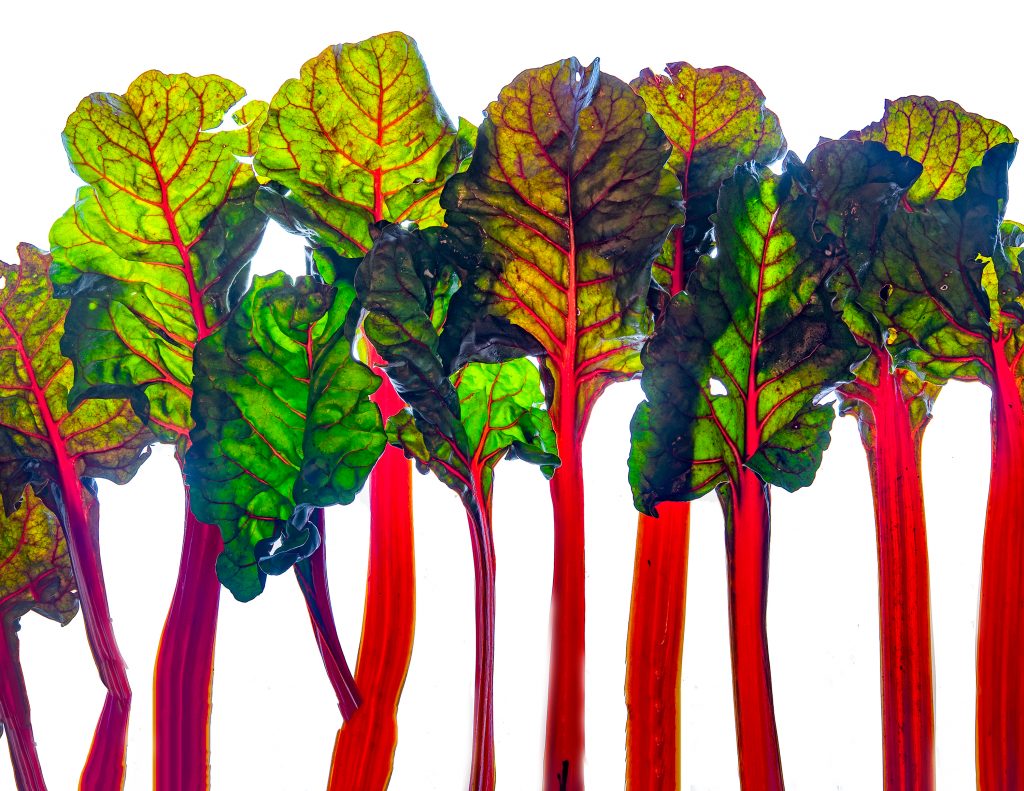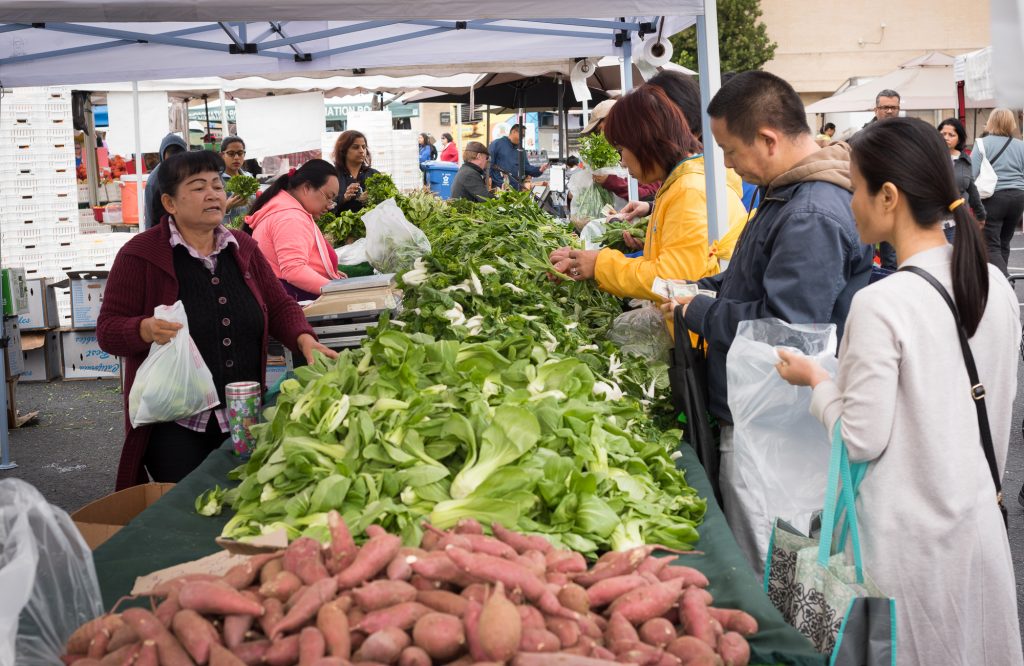
Rainbow chard is not always the most common vegetable on every table but when you read about what WebMD has to say about it you might make it a weekly staple in your dining room or kitchen.
They offer 9 reasons to eat it and the best one is their summary of its nutritional benefits, “Swiss chard is a nutritional powerhouse — an excellent source of vitamins K, A, and C, as well as a good source of magnesium, potassium, iron, and dietary fiber.”
But we put it in a poster because we loved this image and the way the leaves reached up to the sky with luminous colors and shapes:

This rainbow chard came from a farmer’s market here in the Bay Area. The Huffington Post has the best list of benefits of farmer’s markets we have ever seen. They list 15 of them, which include better flavor and nutrients, better financial support for local farmers, and lower impact on the environment due to lower miles needed to get them to market, on average. I find that the best thing about visiting a farmer’s market is to be more aware of what is in season here locally PLUS it is inspiration for new recipes because you always see something new coming into season.
Here is a photo of one of my local markets and you can see the farmers and the customers are all engaged in the buying and selling process.

The rainbow chard that I photographed on the poster was picked early in the morning and secured into a big loose bunch by the farmer who grew it. The leaves were so beautiful with their bright green colors and deep red veins and stems. There were only a few bunches left so I quickly bought one and then I brought it home to my studio and took many shots to get the composition and exposure just right. It became part of my portfolio for an academic project and it was edited many times to make the cropping and light just right.
Many of the best lessons in nutrition are about colors because the pigments in fruits and vegetables are very beneficial. North Carolina State University has an online project about pigments and they summarize their importance with this note, “They are also important for humans, attracting our attention and providing us with nutrients. Major plant pigments include carotenoids, anthocyanins and other flavonoids, betalains, and chlorophylls.”
To make the poster photo I wanted to add a little more color to the chard to illustrate my message, which is to be brighter every day with good nutrition. This is not a statement but an important fact that is scientifically proven for all ages. Eating more fruits and vegetables was shown to slow down cognitive decline from aging for older individuals. Another study published in the Journal of School Health found that children who had a higher quality diet with enough fruits and vegetables were less likely to fail an academic test.
Judy Doherty, BS, PCII
References:
- Swiss Chard 9 Healthy Facts, WebMD, October 2010, Accessed October 2018.
-
doi: 10.1212/01.wnl.0000240224.38978.d8
- Veugelers, Paul, et al, Diet Quality and Academic Performance, Journal of School Health, April 2008,





